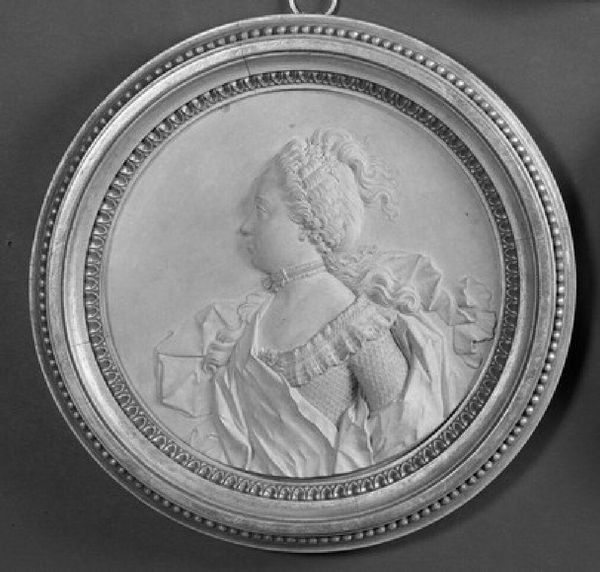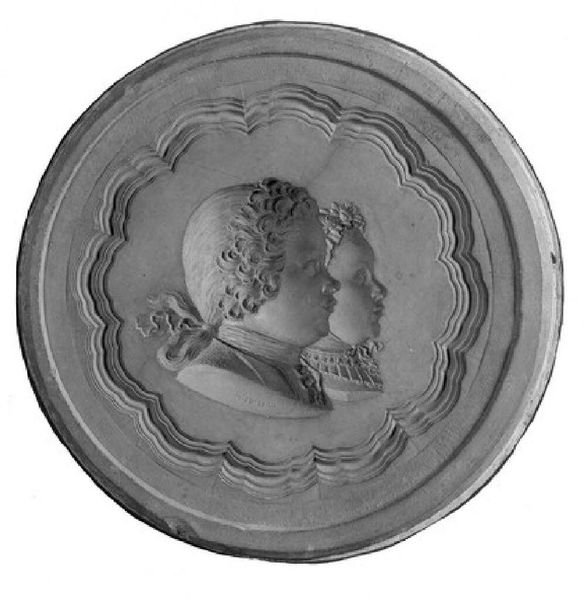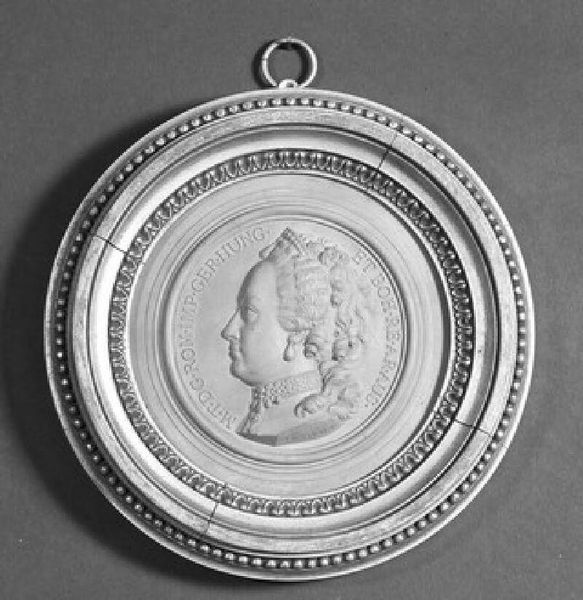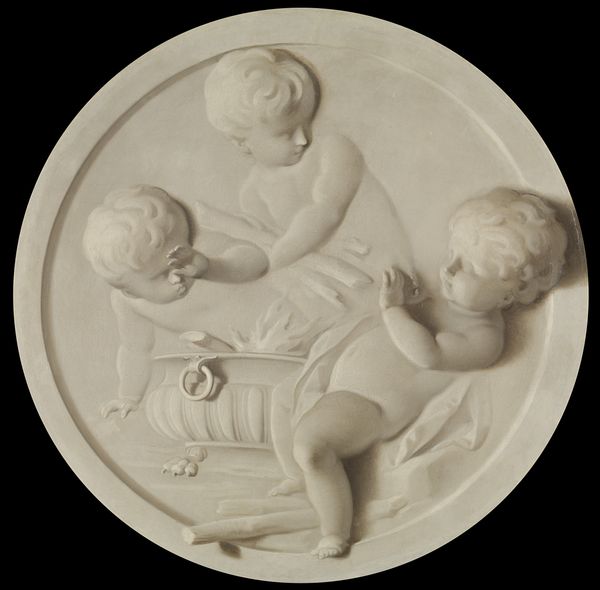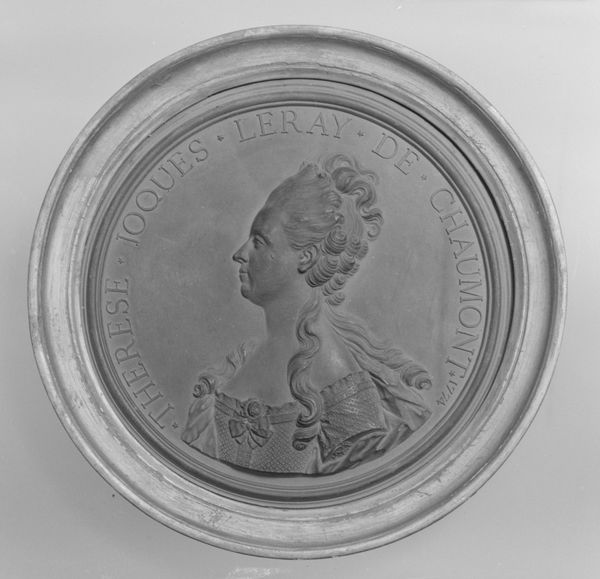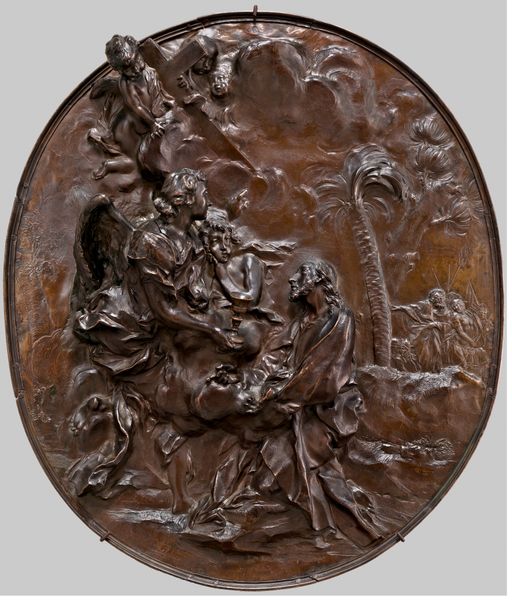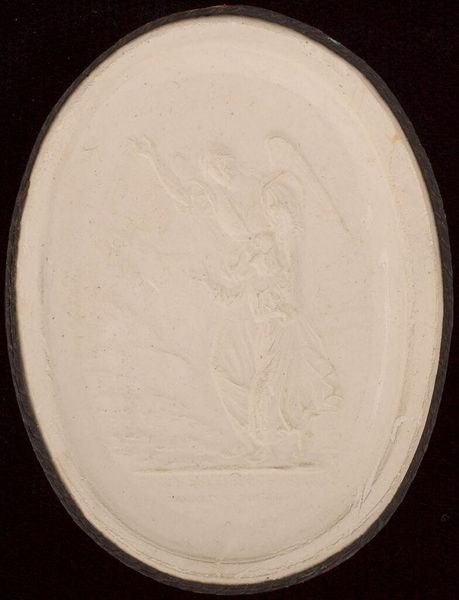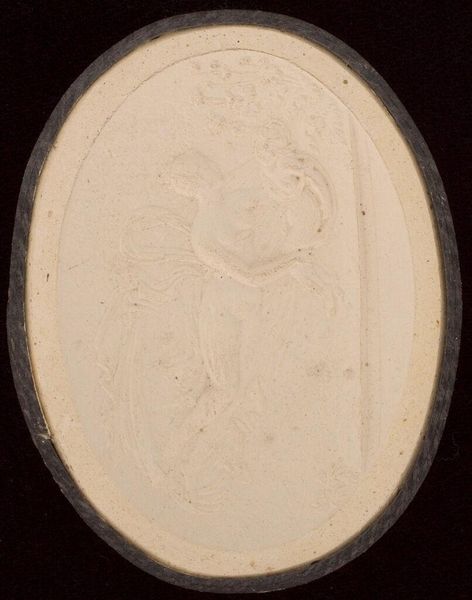
Portrætmedaillon forestillende Lorenz Spengler 1779 - 1785
0:00
0:00
relief, porcelain, sculpture
#
portrait
#
neoclacissism
#
sculpture
#
relief
#
porcelain
#
form
#
sculpture
#
miniature
Dimensions: 15 cm (height) x 12 cm (width) (Netto)
Curator: This beautiful porcelain relief portrait medallaion represents Lorenz Spengler. It was produced between 1779 and 1785 by Johan Jacob Schmid. Editor: It’s striking how clean and precise the lines are. The stark white material gives it such a pristine, almost austere feeling, doesn’t it? Despite the classical references, it feels like it belongs to a world preoccupied with social rank and the burdens of appearances. Curator: Precisely. Porcelain was highly prized at the time and signified wealth and status. Schmid's skillful handling of the medium aligns with Neoclassical ideals: rationality and order in artistic representation. The selection of Spengler himself points to a world increasingly focused on meritocracy given Spengler’s natural history interests. Editor: So even a medium like porcelain plays a role? And to me, that small scene below the portrait adds so much. Are those cupids or putti engaged in some playful act? Curator: It’s a symbolic element often associated with depictions of learned men during this period. These images weren't arbitrary. They served to frame the subject within a defined intellectual context, and of course to underline Spengler's contribution to society, while simultaneously emphasizing the commissioner's refined aesthetic and informed perspective. Editor: The context surrounding portraiture during this era is always so fraught—they were often propaganda machines, and here you see the contrast: science represented next to privilege in an almost brutally effective package! The crisp detail renders Spengler in an idealistic way. Curator: Consider too how miniature artwork gained considerable significance during that period, reflecting an increased focus on individual identity and cultivating connections. Pieces like these served as tokens of social engagement. They circulated within a defined sphere that signaled entry into a cultured milieu. Editor: Understanding those historical relationships allows for a deeper insight of today’s power structures—and how art acts as a carrier, subtly upholding such social dynamics! It certainly provokes an uncomfortable but important sense of reflection. Curator: Indeed. We observe a meticulously designed presentation piece revealing subtle political undercurrents operating within this particular epoch. Editor: That's how an artwork from a long-gone world helps us dissect ours a little more clearly!
Comments
No comments
Be the first to comment and join the conversation on the ultimate creative platform.
